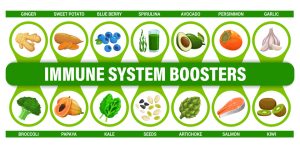Boxes of chocolates are a popular choice for a Valentine’s Day gift, but consider opting for dark chocolate. As an increasing amount of research has shown, there are quite a few health benefits associated with dark chocolate. Some of these benefits include:
Antioxidant properties: Dark chocolate includes high amounts of flavonoids, polyphenols, catechins, and other organic compounds that function as antioxidants. Antioxidants offer protection against free radicals, which cause damage to your cells and contribute to a wide range of diseases, such as heart disease and cancer.
Improved cardiovascular health: The flavonoids contained in dark chocolate stimulate the lining of your arteries to produce nitric oxide, which improves blood flow and reduces blood pressure. However, this effect is mild, and may not necessarily help people with conditions such as chronically-high blood pressure and type 2 diabetes.
Protection against high cholesterol: High levels of low-density lipoprotein (also known as LDL, or “bad” cholesterol) are a major risk factor for heart disease. Additionally, certain kinds of LDL cholesterol can oxidize when they interact with free radicals; this can cause inflammation and buildups of plaque to form inside your arteries. Dark chocolate reduces levels of LDL cholesterol in the body, including the types most likely to oxidize.
In addition to these benefits, dark chocolate also contains significant amounts of needed nutrients, such as:
- Fiber
- Iron
- Magnesium
- Manganese
- Copper
- Potassium
- Phosphorous
- Zinc
- Selenium
It’s important to keep in mind that dark chocolate is most beneficial when consumed in moderation. The recommended serving size of dark chocolate is up to two ounces, which is equivalent to about six thin squares broken off of a bigger bar.
All content of this newsletter is intended for general information purposes only and is not intended or implied to be a substitute for professional medical advice, diagnosis or treatment. Please consult a medical professional before adopting any of the suggestions on this page. You must never disregard professional medical advice or delay seeking medical treatment based upon any content of this newsletter. PROMPTLY CONSULT YOUR PHYSICIAN OR CALL 911 IF YOU BELIEVE YOU HAVE A MEDICAL EMERGENCY.










